Friday
I left Austin last night traveling through Chicago before arriving in London. Upon arrival, I became aware that hundreds of passengers had been stranded at Heathrow. Everyone was staring at airport monitors which read only two things for both arriving and departing flights - "delayed" or "canceled." As I walked through the airport I could hear the sound of desperation as raised voices echoed throughout. Apparently, many would be stuck at the airport overnight and probably miss connecting flights. I was lucky I guess, I had 3 1/2 hours before my next flight to Casablanca and hopeful any delay would work itself out before then. I just had to make myself comfortable and wait.
After 2 hours of tossing and turning, I decided to try and find the project director who was also going through Heathrow. I had planned on meeting her on the flight to Casablanca but since I had time, I thought I would wander around and see if I could find her. As I wandered through the terminal, I was amazed at the poor condition this terminal at Heathrow was in. The paint was peeling from walls, restrooms smelt as if they had not been cleaned in weeks and there were few monitors listing arrival or departure times. Even when I asked specific questions I was never given sufficient details. Inquiries were merely treated as inconveniences and I was directed away from the counter to someone else. Eventually, I found the project director waiting patiently, still working on logistics for the project. About an hour later our departure gate was finally listed and we headed to our plane.
As we waited on the tarmac for the lineup of planes due to all the delays congestion to clear, I struck up a conversation with a fellow passenger. What drew my attention was the title of an article he was typing away on his laptop. It read, "Afghan Gold." His name was Tahir Shah. Tahir was a British travel writer living in Morocco who has worked with various organizations including National Geographic and the Discovery Channel.
Tahir had recently completed a project that was to air on the National Geographic channel regarding the search for a missing city in Peru. What caught my eye though was a proposal his was writing to National Geographic regarding a project in Afghanistan. According to Tahir, a treasure, worth an estimated $530 billion, belonging to a powerful Shah from Persia that had been en route from India was taken when a General in the Shah's army turned rogue and hid the treasure in Afghanistan before being killed. Tahir related that the treasure had never been located and still remains hidden to this day. What I questioned was how it could not have already been found. With the intense military action that has been going on in the country, it would seem highly unlikely that it could remain hidden. Tahir was undaunted in his belief of its existence and that it would be found. As we talked, our plane finally departed and we traveled most of the way to Casablanca discussing his project.
Upon arriving in Casablanca, we rented a car and drove to Rabat. Rabat is the capital of Morocco and since the project director needed to meet with a Moroccan archaeologist with the Institute National des Sciences d’Archéologie et du Patrimoine (INSAP) to finalize our plans.
Saturday
I was grateful the drive to Rabat didn't take long because I was already starting to fade due to jetlag. When we finally arrived at the Hôtel Siaha Rabat around 9:00 pm I fell fast asleep.
In the morning, we decided that since it was the weekend and all government offices were closed, we would spend the day exploring the city. Our hotel was just across the street from the Hassan Mosque and Tower and made for a perfect beginning.
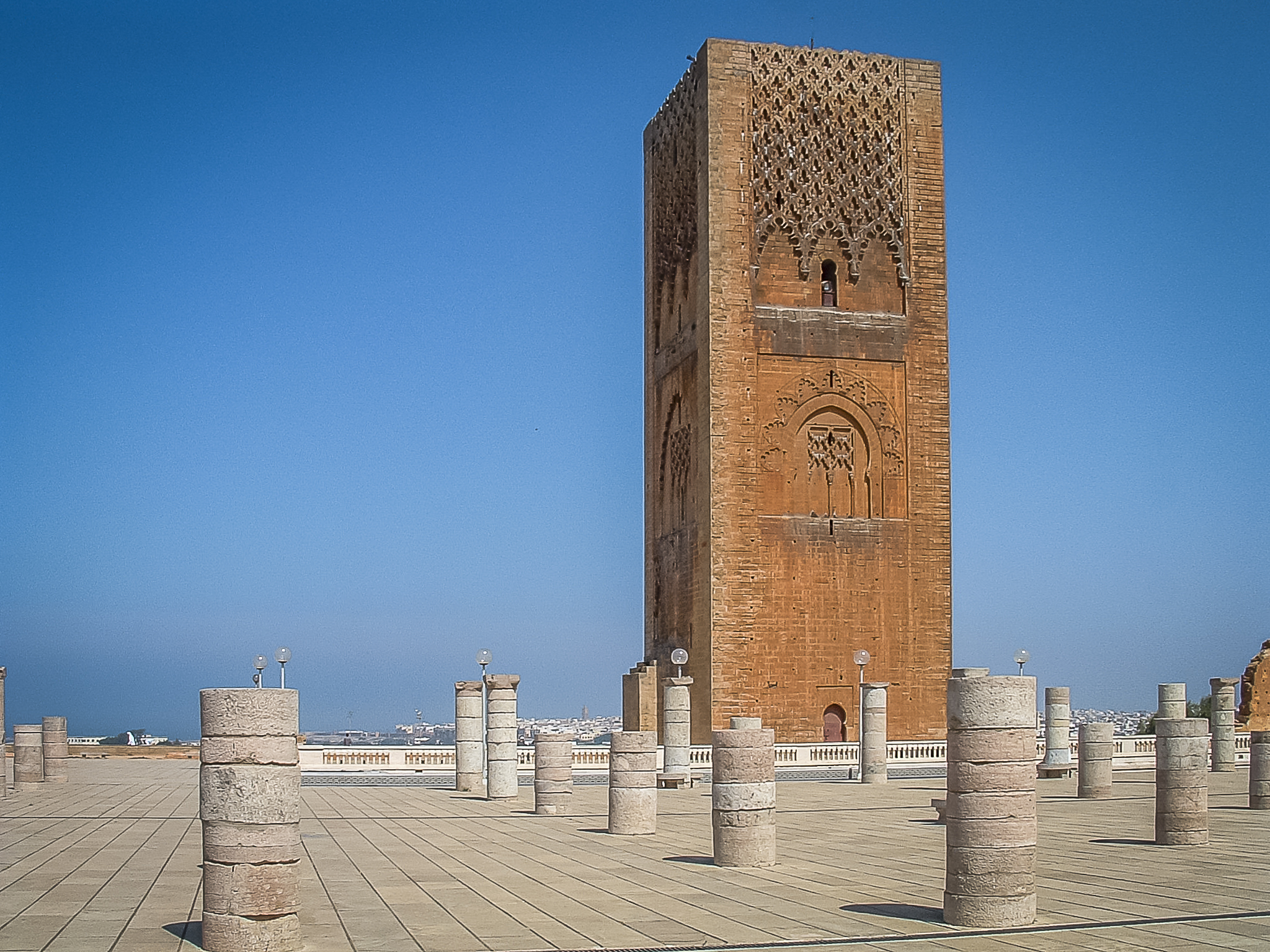
Construction began in 1195, under the orders of Sultan Yaqub al-Mansur who wanted to build the largest minaret and mosque in the world. It was not to be, however and was left unfinished with his death in 1199. These remains were an apparent attempt by this Almohad ruler to make Rabat the new imperial capital. In 1755, much of the mosque was destroyed by an earthquake. Now all that remains is the Hassan Tower and pieces of the columns that would have been used to support the mosque.
Located on the opposite side of the mosque grounds is the Mausoleum of Mohammed V. This mausoleum was commissioned by his son, Hassan II, whose body is also included in the mausoleum. Mohammed V is the grandfather of the current King of Morocco, Mohammed VI.
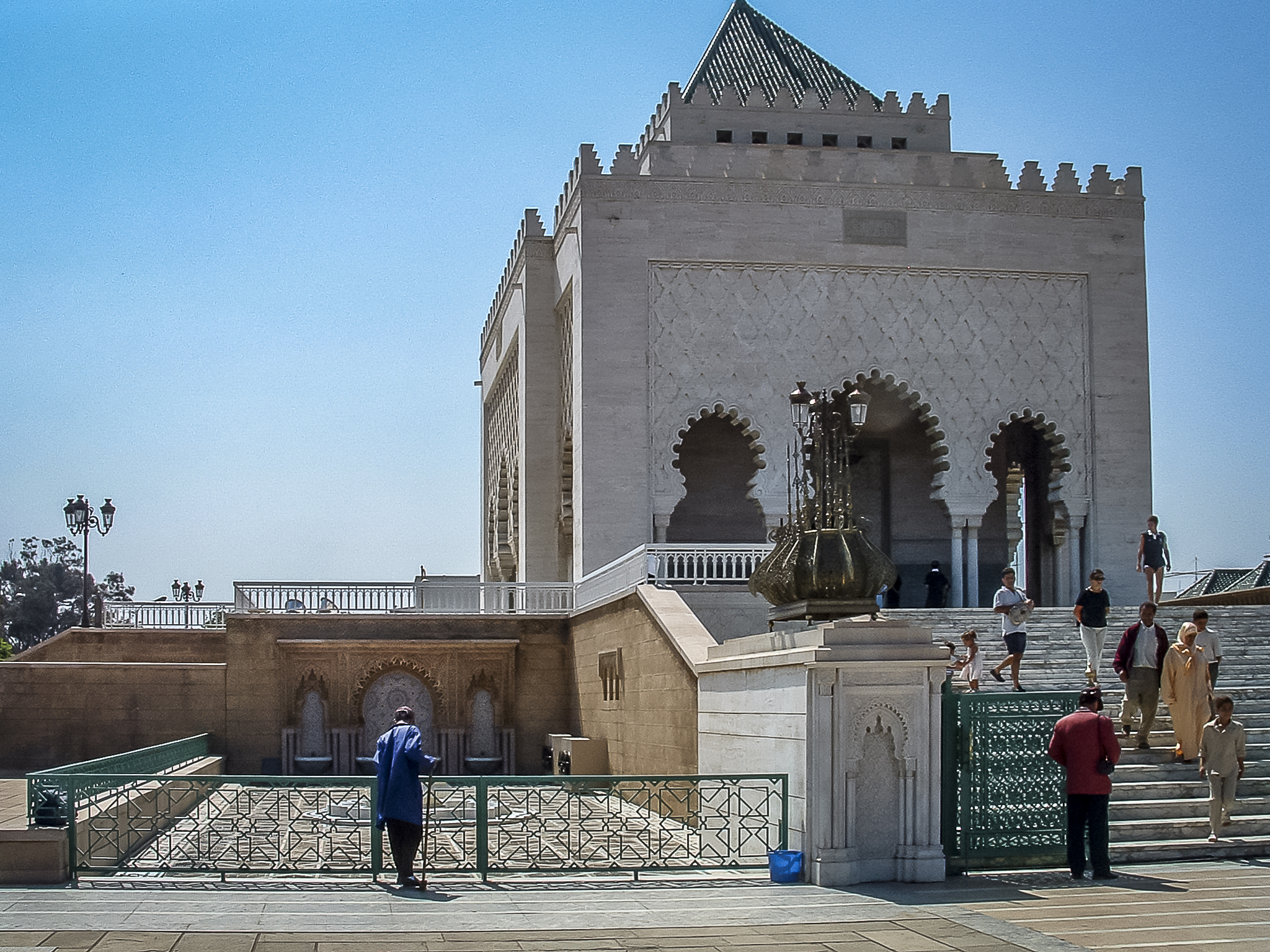
The mausoleum is made of white marble and stands high above the surrounding grounds. Entry is through a wrought-iron door that opens onto a stairway leading to the dome beneath which lies the sarcophagus of Mohammad V. This is a beautiful building lined with tile mosaics across every inch of the walls and ceiling. There are guards at every entrance more than willing to stand for a photo as long as you don't ask them to step out of the archways in which they guard. They must never leave the entrances unguarded.
After leaving the mausoleum, we made our way to a beach running alongside the western edge of Rabat on the Atlantic Ocean. The water was beautiful but very cold. Believe it or not, there were a lot of surfers trying to find that "small" but perfect wave. It seems there is a Rastafarian subculture here and many surfers sported the traditional dreadlocks that make them easy to identify.
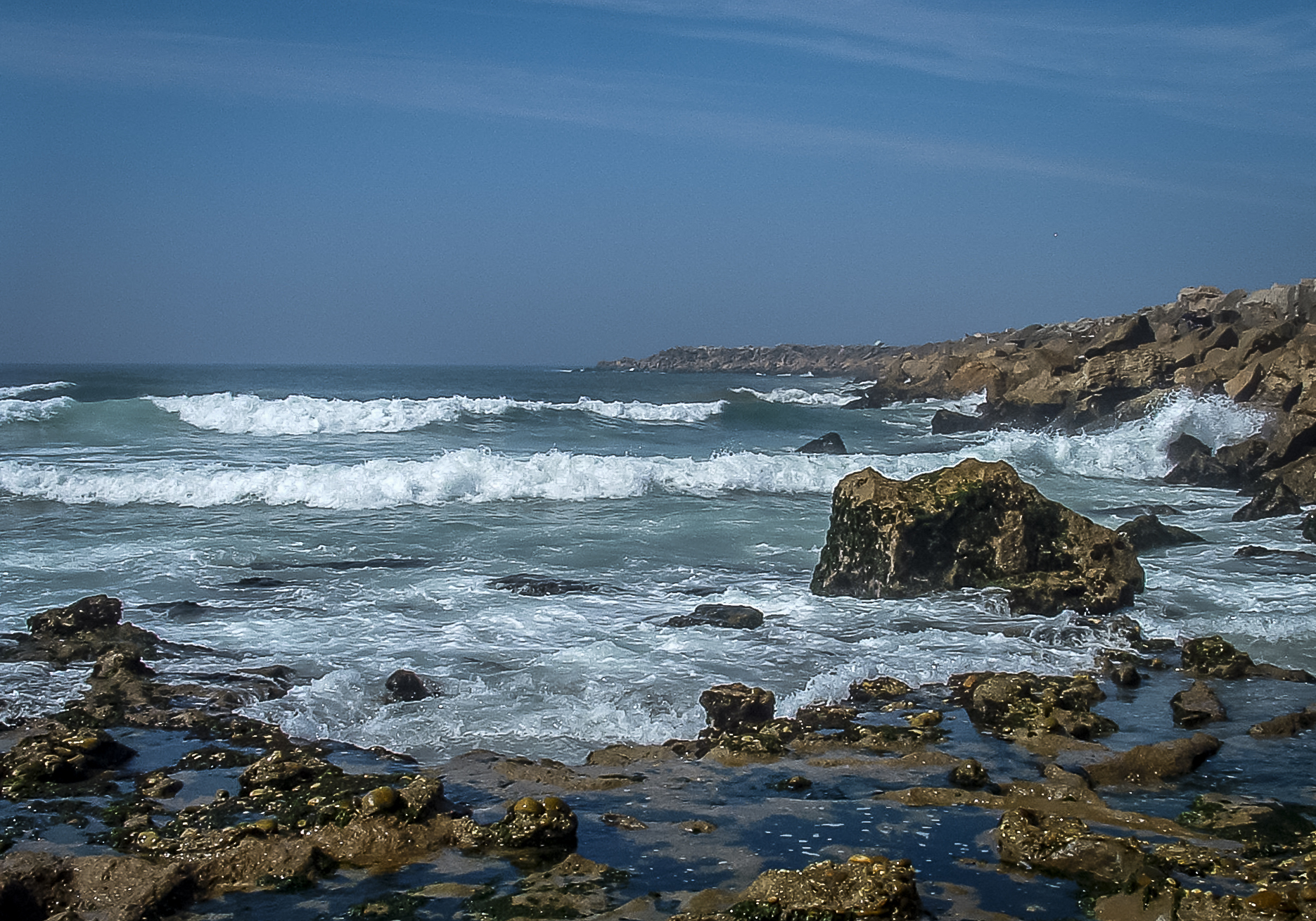
Coming off the beach I noticed a large Muslim cemetery across the street that caught my eye. For anyone who knows me, I am fascinated with cemeteries so this is indeed an appropriate shot.
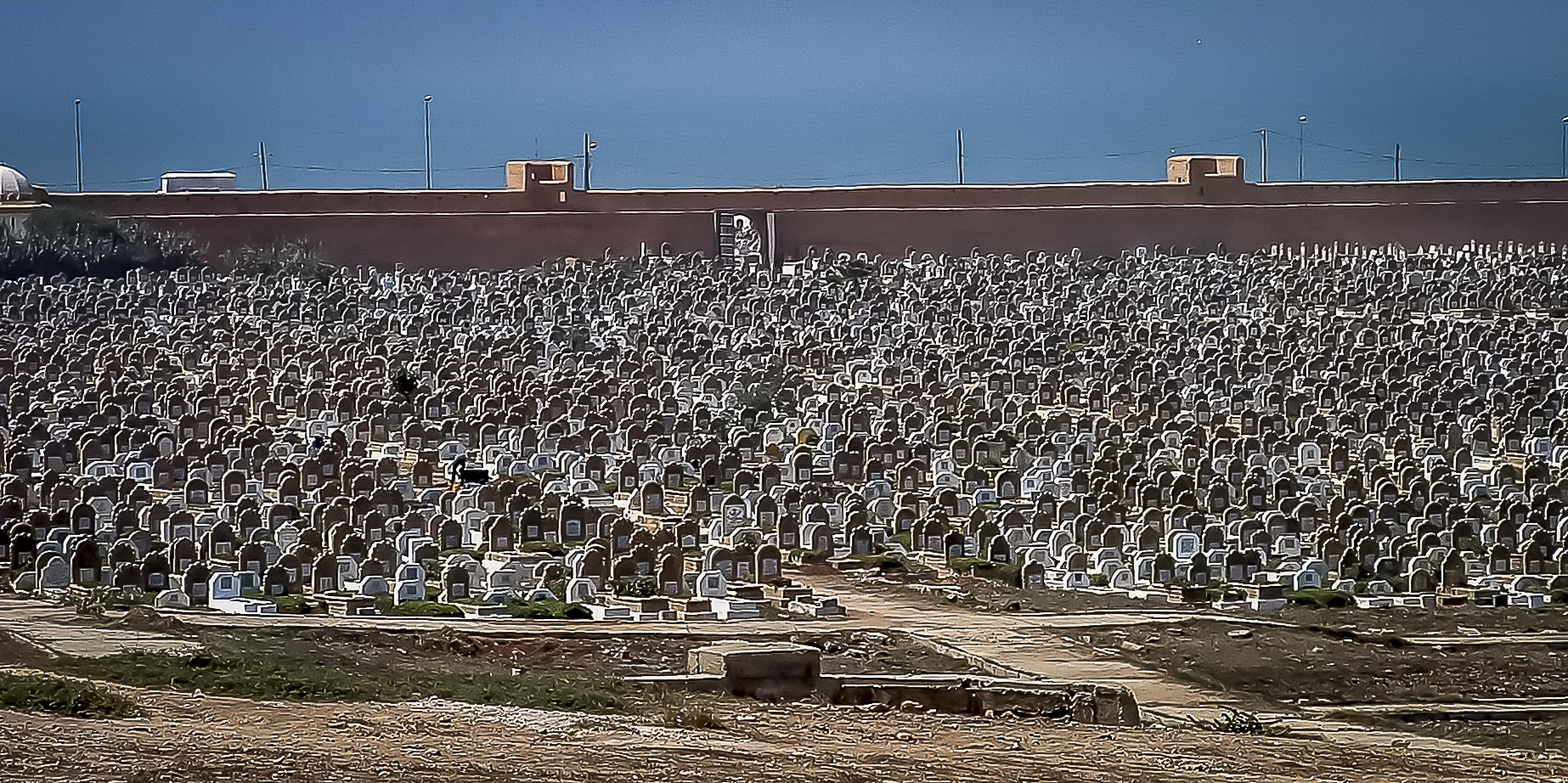
Monday
On our way out to the office of Dr. Elarbi Erbati (INSAP), we stopped at a Roman archaeological site that was of particular interest. This was the site of Chellah Necropolis. Archaeological excavations at Chellah have uncovered the remains of a Roman city known as Sala Colonia. Once a prosperous city, Sala Colonia later declined and by the 10th century had fallen into ruin. Still visible today is the main thoroughfare (decumanus maximus) that crossed all Roman cities from east to west. It led out from Sala Colonia to the port, built in the 1st century BCE but now lies buried beneath the sand.
Chellah / Sala Colonia - Morocco
Built around and on top of Sala, Colonia was the Chellah Necropolis, a more complete set of ruins. This structure was built in the 13th and 14th century by various Muslim builders. The walls of the Chellah Necropolis, which have the ochre tones typical of Rabat, were built on top of the pre-existing Roman walls of Sala Colonia. Situated within the walls of the necropolis are the ruins of the mosque. Many Muslim rulers and their wives are buried here. The last burial dates to 1351 CE. Also, within the walls of the necropolis was a religious institution that functioned simultaneously as a mosque, a center of learning, and a hostel for pilgrims and students. The necropolis was later abandoned and eventually destroyed by the same earthquake in 1755 that affected the Hassan Tower and Mosque. Colonies of storks have now invaded the remains and their nest can be seen high up in the trees and on the large minaret.

Tuesday
Today, we are in Tangier. This will be our base of operations for the next 8 weeks. We have to first make contact with the American Legation Museum. The Legation has been helping the project as an unofficial liaison and has arranged our hotel at Le Dawliz, which is one of the nicer hotels in Tangier if that says anything. Still, it is clean and comfortable and will work well after the daily grind of fieldwork. At least I can get BBC news.
It now seems that the project will start a little later than expected. We were hoping to start in a few days but because our equipment and boats were shipped to Casablanca instead of Tangier and still need to clear customs, there will be a delay (surprise, surprise). We also have to wait on the Moroccan Gendarme (Moroccan Sheriffs) divers to arrive. These men will represent the Moroccan government and along with Dr. Erbati will be working with us on the project. They are here to keep us safe and report back to their commanders what is happening.
Thursday
As I sit on my balcony at Le Dawliz Hotel in Tangier smoking a Cuban cigar, I can see the lights from Spain shining in the distance. The full moon and the distant planet Mars keep me company. It is well past midnight and the city is very quiet.
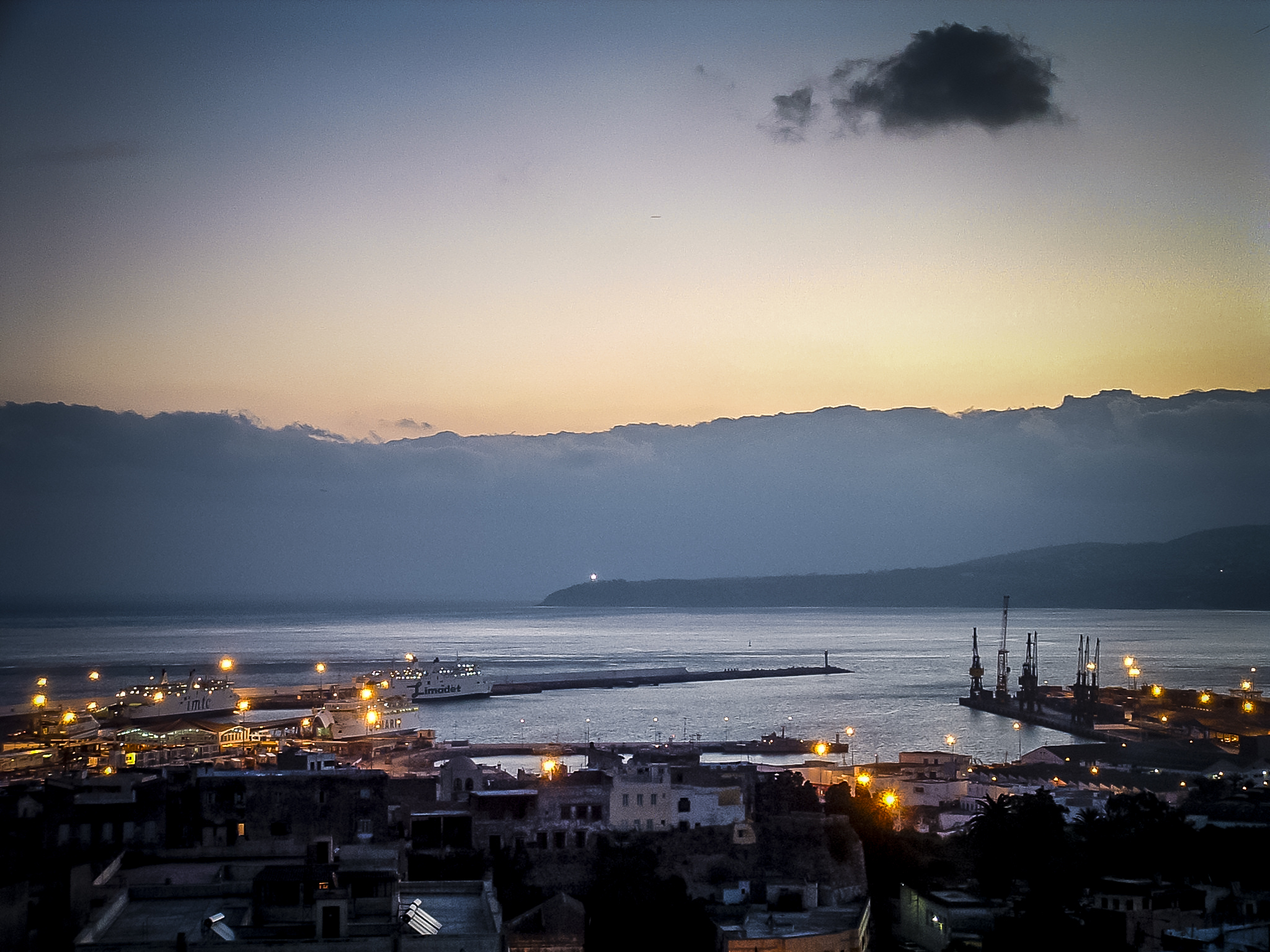
Friday
Today we decided to take a trip out to Cap Spartel. This is very near to where we will be diving and is the most northwestern point on the African continent. Here, you can see the water of the Atlantic coursing through the Straits of Gibraltar and into the Mediterranean. Currents are swift and the water is cold. We will be diving just south of here and it looks like it will be tough.
Cap Spartel is marked by a beautiful lighthouse built in 1865, and on a clear day, you can see all the way to Spain from here.
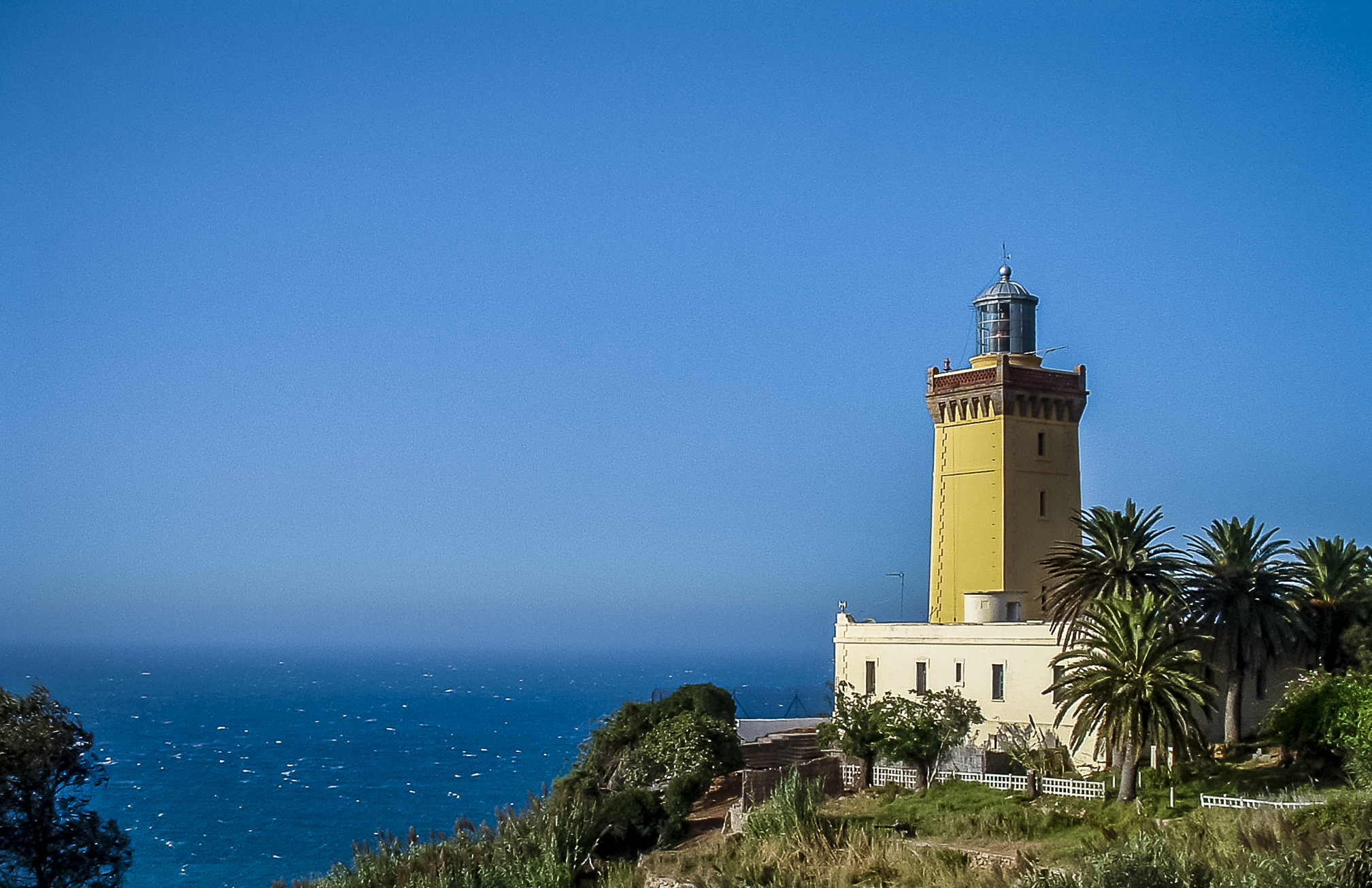
Just south of the lighthouse are the Grottes (caves) of Hercules where the sea has carved out an impressive cave from the cliffs. The opening to the cave, facing out to the sea, is cleft shaped looking like the reversed map of Africa.

This cave is a major attraction because of its association with Greek mythology. It was here where Hercules sleep before attempting one of his 12 labors. Throughout the cave, you will find various artisans selling their wares, but be careful many are fake and it is difficult to know what is real and what is not. If you decide to buy something make sure you get a good price and don't be too disappointed if it turns out to be worthless.
Saturday
Still having considerable time before diving begins, we decided to head to the Spanish settlement of Ceuta along Morocco's Mediterranean coast. This small Spanish island lies opposite Gibraltar and many consider Ceuta and the Rock of Gibraltar to be the Pillars of Hercules guarding the Mediterranean Sea. There is another location that others consider to be the southern point of this natural gateway. It is a large promontory called Jbel Musa that is visible for miles and could easily be seen from the straits. Ceuta, on the other hand, can only be seen from a ship when it is nearly upon it.
Ceuta has been visited by various traders since the 12th-century and for years there has been a constant debate over ownership between Spain and Morocco. As you walk the narrow streets, I will say it feels a lot more like Spain than Morocco. The architecture and culture feel more European which is completely different than the chaotic hustle of Tangier.
I will give one piece of advice when crossing the border leading to Ceuta; you need to have a great deal of patience. There is no such thing as order as you try to get your exit stamp from Morocco so be patient. I mean really be patient. It takes a long time and you will get very frustrated, but just before you explode and try and throttle someone you will get your stamp and will be able to cross the bridge to Ceuta where you can sit in comfort and enjoy the view so please be patient and remember it is a virtue.
Tuesday
We have been waiting for our boats and equipment to clear customs for the past week and today we received word they are on their way to Tangier. We now expect everything to arrive tomorrow or Thursday at the latest. Now, all we have to do is hope the weather improves. The wind has been blowing for the past week and does not show any signs of letting up. Still, the earliest we can start diving will be this coming Saturday or Sunday. The Moroccan divers still have not arrived and we cannot begin until they do.
Although our equipment is almost here, we still have time for additional sight-seeing so today we headed to Chefchaouen which is about 100 km south of Tangier. Steep narrow streets with white and indigo washed buildings, small squares, ornate fountains and houses with elaborately decorated doorways and red tile roofs make this an unexpected stop in Morocco.
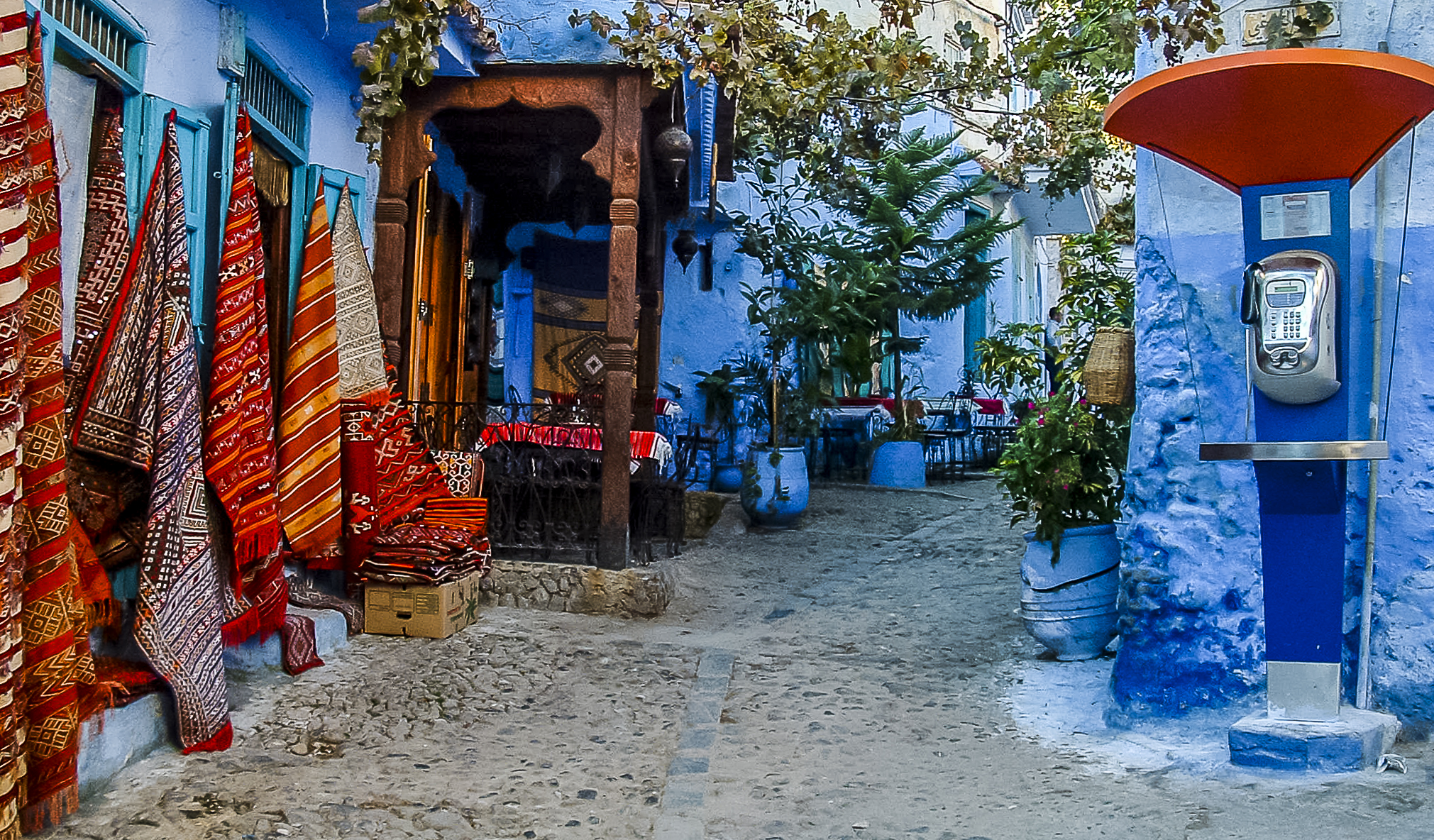
Chefchaouen was founded in 1471 by descendants of the Prophet Mohammed as a stronghold in the fight against the Portuguese. This city has one of the oldest and most interesting medinas I have seen. Here you can find hundreds of workshops where you can buy many different types of handmade crafts. As you walk the medina, you get the sense of being on a small Greek island. Chefchaouen seems to be a world apart from the rest of Morocco and a treasure to steal away an afternoon or two, or three….
I highly recommend this city to anyone traveling in Morocco.
As we made our way back to Tangier, the most unusual arrangement of clouds began to descend over the valley from the hills butting up to the Mediterranean.
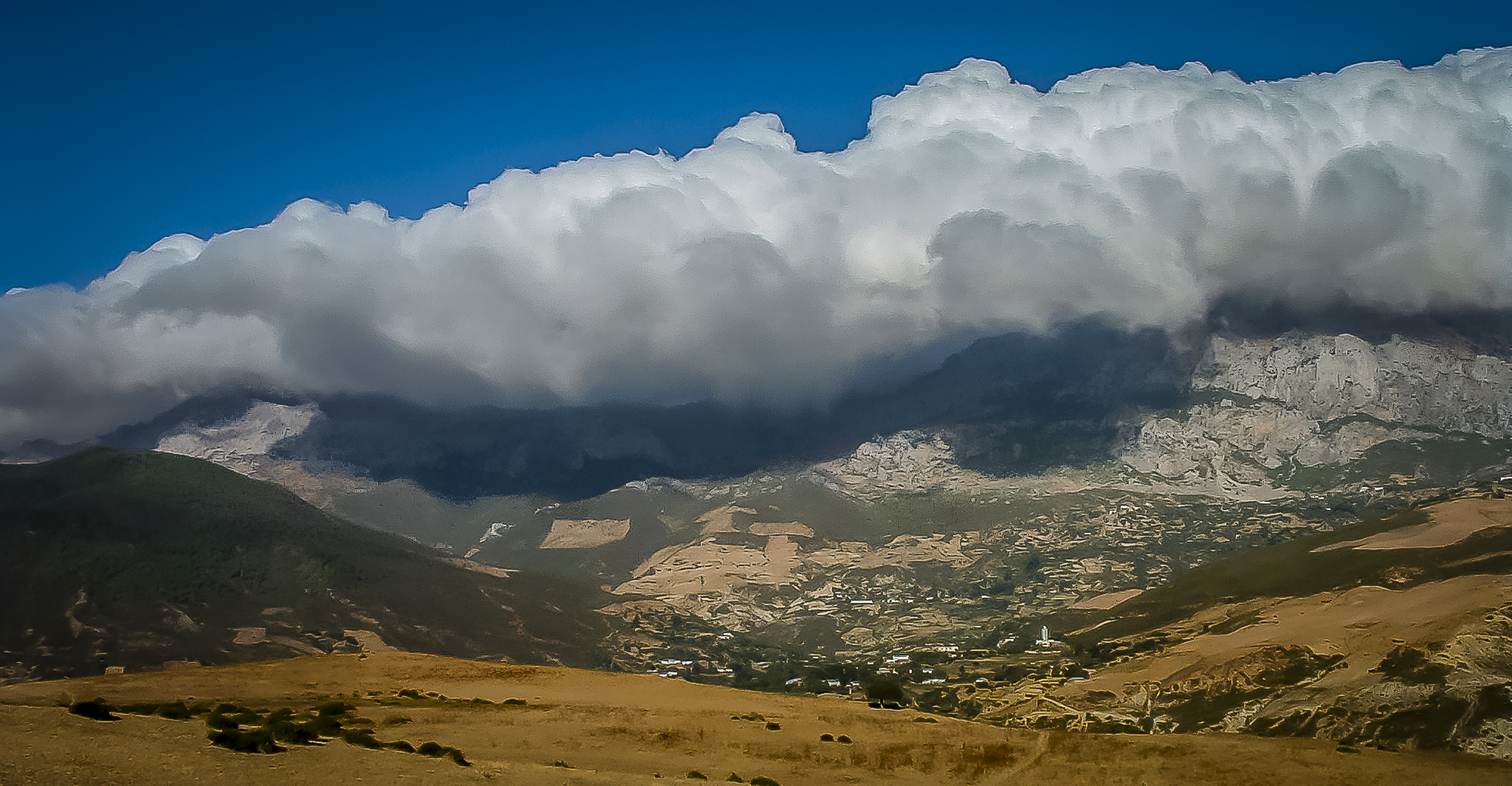
Thursday
Our boats and equipment finally arrived today. They arrived by truck from Casablanca and we spent most of the day unpacking our gear, arranging the containers, and setting up the Nitrox fill station. Tomorrow we plan on putting the boats in the water and getting them ready for diving and remote-sensing.
Project boats consist of 2 RIB boats that will be used for diving, 6m Venus and the 8.5m Hercules, there is also the 8.2m remote-sensing vessel, Juno which will be running a multi-bean sonar for the survey. All three boats belong to RPM Nautical and are here to support the project.
We hope to hit the water on Saturday or Sunday. The first series of dives will consist of training and orientation dives to get everyone comfortable with local conditions and equipment.
For the next few days, our day-to-day operations are pretty straightforward. We need to get all of our equipment set up and ready for use. The remote-sensing team can start as soon as they get the equipment on Juno ready to go. We are still waiting for the Moroccan divers to arrive but we were told they would be here in the next few days.
Saturday
We were not able to take the boats out today due to high winds and because of more red tape. So, we spent the day filling our 20 nitrox tanks and setting up additional equipment on Juno. If the winds cooperate, we will try to conduct our training dives tomorrow. If all goes well, we will be on site Monday morning.
I have never been so jealous of a fill station in my life. Everything was brand new and built to order. One of the containers contained the entire fill station including a large generator that could power a small compound.
It takes roughly 20 minutes to fill 5 tanks but since we had to learn how the system worked, it took us about 2 1/2 hours to fill all 20 tanks. Not that exciting but interesting nonetheless.
Sunday
Again we were put off from diving today. More hands need to be greased before we are going to be allowed to start. Hopefully tomorrow we will head out. In the meantime, we began the task of setting up our survey lanes for the multi-beam survey.
Monday
Today was the day. We were finally able to go out and conduct our orientation dives. We choose a location that was somewhat sheltered and fairly shallow. This would allow the dive team to get familiar with the environment. We need to prepare for the cold water, high currents, and new equipment before we dive on any deeper sites.
On the way out, we took notice of Jbel Musa to the east. It is easy to understand why many believe this feature, as opposed to Ceuta, is the southern guardian.
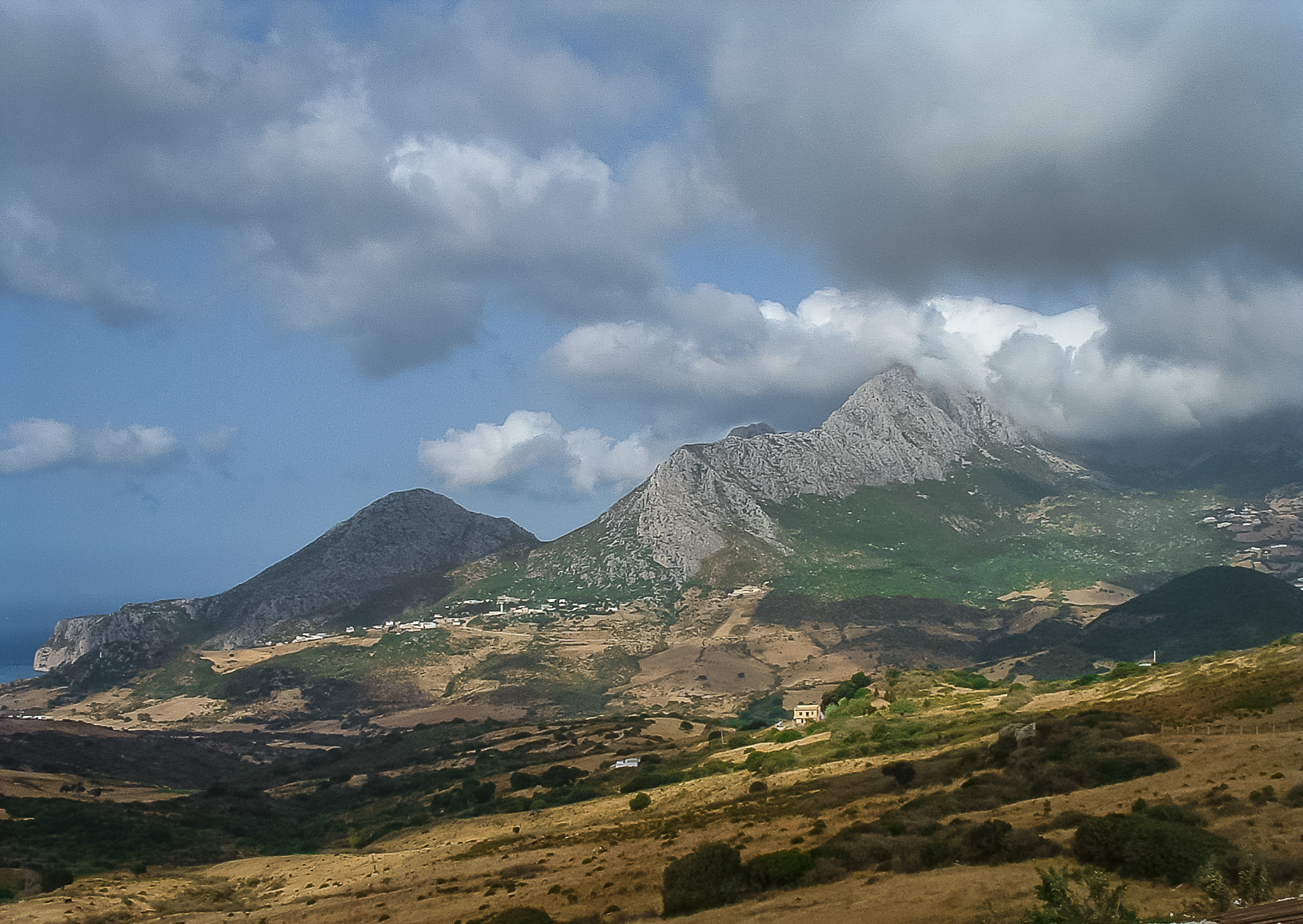
Once on location, the first team hit the water. We knew the water was going to be cold based on our orientation dives, and in fact, it was at 62°F. We were all wearing 8mm full body wetsuits with 3mm vested hoods. We also had 3mm gloves and booties.
I was on the second dive and with all the neoprene I was wearing and the high current, I wore 28 lbs. of lead to get down and stay down. I have never needed that much weight in my life. I thought for sure I would sink like a stone but I didn't because of the current. The surge was so strong that I need to periodically grab hold of a rock to stay in place as the surge went past and then let go to get pushed in the direction I wanted to go. You really needed to kick to get anywhere.
The visibility was also very poor. It reminded me more of my local lake than the Ocean. We only had about 6 feet of visibility but there was not much to see anyway. During today's dives, I saw only one, 3" stone fish and a few smaller fish. The most interesting thing to see was sea anemones. Still, we were glad to have finally gotten wet.
Tomorrow we will actually be on one of the sites we plan to investigate. Hopefully, the weather will be as calm as today and we can get some work done.
Wednesday
For the past couple of days, we h